Ijraset Journal For Research in Applied Science and Engineering Technology
- Home / Ijraset
- On This Page
- Abstract
- Introduction
- Conclusion
- References
- Copyright
Formulation and Evaluation of Herbal Shampoo
Authors: Siddhesh Jatar , Akash Shelke
DOI Link: https://doi.org/10.22214/ijraset.2025.66699
Certificate: View Certificate
Abstract
The aim of this research is to create and assess a multi-herbal shampoo using herbal components. Aloe powder, Reetha powder, Shikakai powder, Hibiscus flower, and Alma powder Citric acid was used to adjust the pH and a little amount of methyl paraben was added as a preservative. This study’s primary goal is to make and assess a herbal shampoo and identify its physiochemical function, with a focus on the product’s efficacy, safety, and quality. Herbal shampoo is a natural hair care product that is used to strengthen, darken, and remove dandruff and grease from hair. Additionally, it gives the hair shine, softness, and smoothness. Shampoo is a pre- mixture of cosmetics that uses a variety of medications. these medications have a variety of adverse effects, including headaches, nausea, high scaling, hair loss, and discomfort from scratching. In order to create herbal shampoo without any negative effects, an experiment is conducted. The most popular hair treatment is shampooing. Shampoos are mostly products designed to clean the scalp and hair. Despite being safer and more effective than synthetic shampoos, it appears unlikely that herbal shampoos will be well-liked by customers in the current market. A more drastic strategy for making herbal shampoo more widely used would be to alter consumer expectations by emphasizing efficacy and safety. We have evaluated and compared the herbal shampoo created in a previous study with two commercially available shampoos. The results of this study show that consumers have occasionally experienced negative side effects as a result of synthetic preservatives.
Introduction
I. INTRODUCTION
Most likely, shampoos are utilized as cosmetics. It is a hair care product that we use on a daily basis to clean our hair and scalp. Shampoos are a viscous mixture of detergents with appropriate additions, preservatives, and active substances that are most commonly used as beautifying agents. Typically, damp hair is rubbed with it before being rinsed with water to remove the residue. Shampoo is used to remove accumulated dirt from hair without removing a significant amount of sebum There are a lot of synthetic shampoos on the market right now, both medicated and non-medicated, but herbal shampoo gained popularity because it is safer, has no negative effects, and comes from a natural source. Synthetic surfactants are added to shampoos primarily for their washing and foaming properties, but long-term use of these surfactants can cause major side effects such dry hair, eye discomfort, and scalp irritation. We can use shampoos with natural herbs as an alternative to synthetic ones. But it’s really challenging to create cosmetics with purely natural ingredients. Many medicinal plants that may have hair-related benefits have been utilized for centuries all over the world and are used in shampoo formulations. These therapeutic plants can be utilized in extracts, powders, crude forms, or derivatives. It is challenging to create a shampoo with just one natural ingredient that is safer and has a milder effect than synthetic shampoos.
This shampoo must also have good foaming, detergency, and solid content. As a result, we thought about describing an unadulterated natural cleanser employing a traditional method using commonly used plant material for hair cleaning. Shampoo that is sold in stores has artificial components that are harmful to the skin. When used in shampoo, the common surfactant sodium lauryl sulphate irritates the scalp and destroys hair follicles. Shampoo formulas also contain preservatives like formaldehyde, which makes the skin more sensitive.
Customers choose herbal goods over synthetic ones since they are now aware of the harm that synthetic ones may do to their skin, hair, and eyes. Herbal products have very few negative effects. There are numerous varieties of shampoos, such as lotions, powders, medicated shampoos, liquid herbal shampoos, clear liquids, and solid gels. [1] Adequate levels of specific vitamins to fulfill your requirements This implies that the nutrients you consume support vital functions like brain function before less important ones like hair growth.
A vitamin deficit can therefore result in a decrease in sebum (your natural scalp oil), more fragile hair strands, slower hair development, and even hair loss. You may provide your body and hair follicles with the nutrition they require to fortify and thicken your hair development by adding vitamins to your diet [2, 3].
A. Benefits of herbal shampoo
- Cleansing properties
- Improving hair hygiene
- Treating scalp condition.
- Treatment for dry scalp
- Treatment for hair loss.
- Treatment for greasing or oily hair
- Relieves irritation
- Repairs damaged hair.
- Shampoo keeps hair silky or smooth,
- Keeps your hair beautiful and blossomed.
- Pure and Organic Ingredient
- Free from Side Effects
- No Synthetic Additives
- No Animal Testing
- Earth And Skin Friendly [6,7].
II. MATERIAL AND METHODS
A. Reetha
fig.no.1
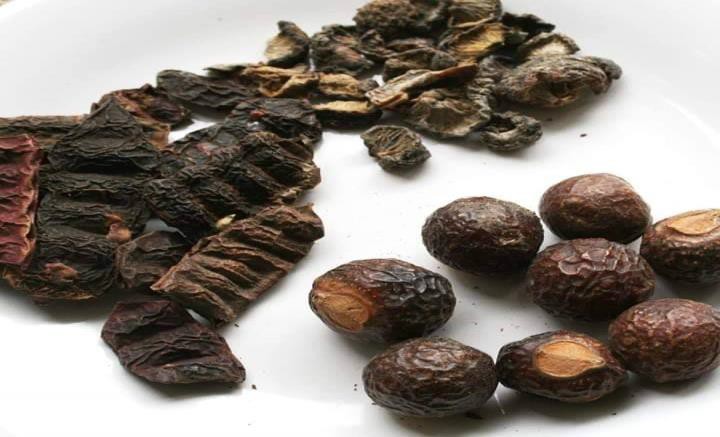
Biological source : Sapindus mukorossi, is a deciduous tree that is the biological source of reetha
Family : Sapindaceae
Chemical constituents: Saponins, sugar, mucilage, fatty acid, steroids, carbohydrates.
Use: Shows cooling effect and excellent cleansing effect on the skin, prevent The scalp from drying.
B. Neem
Fig.no.2
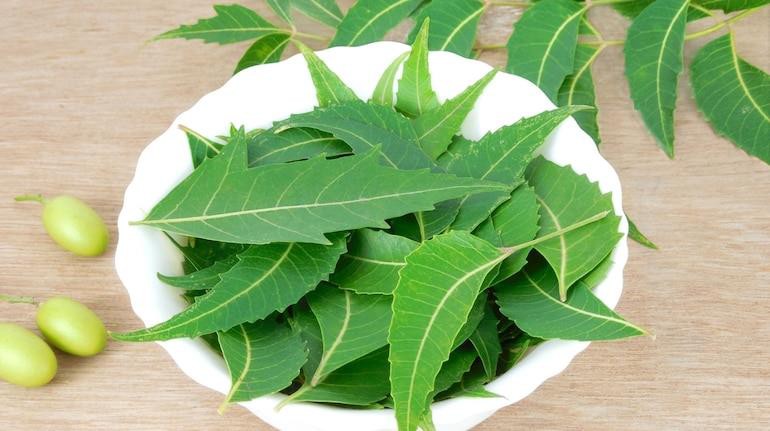
Biological source : The biological source of neem is the Azadirachta indica tree. Neem consists of the fresh or dried leaves and seed oil of Azadirachta indica
Family: Meliaceae
Chemical constituents: azadirachtin and the others are nimbolinin, nimbin, nimbidin, nimbidol, sodium nimbinate, gedunin, salannin, and quercetin.
Use: Use in herbal shampoo. Clean the scalp, clears the clogged pores and Improves hair growth, extremely essential for the treatment of dandruff, Endowed with antiseptic and healing properties, used for a variety of Hair problems, helpful for removing dandruff using neem. According to Ayurveda, the herbs- Amla, Neem, Reetha, and shikakai are needed for Enhancing hair growth.
C. Hibiscus
Fig.no 3
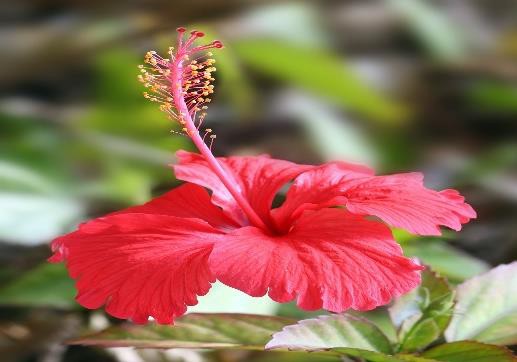
Biological Source: The Hibiscus flowers are large and showy, and the genus grows into herbs, shrubs or small trees( Hibiscus sabdariffa)
Family: Malvaceae
Chemical constituents: flavonoids, anthocyanins, terpenoids, steroids, polysaccharides, alkaloids, amino acids, lipids, sesquiterpene, and quinones
Uses: Most beneficial ingredient for hair, used for the growth of hair, its Regrowth, and hair loss, carries amino acids, Vitamin A, C and alpha Hydroxyl acids along with other nutrients that are highly beneficial for Hair and scalp, keep scalp healthy and minimize the chances of Dandruff from hair.
D. Amla
Fig.no.4
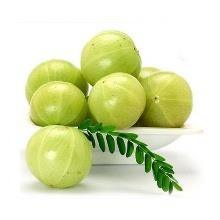
Biological source : This consists of dried, as well as fresh fruits of the plant Emblica officinalis Gaerth (Phyllanthus emblica Linn.),
Family : Euphorbiaceae
Chemical constituents :Amla phytochemicals, including ellagic acid, emblicanine A, emblacani B, gallic acid, phyllantine, quercetin, phyllantidine
Use : Strengthen the scalp and hair, stimulate hair growth, reduce hair loss, Prevent or treat fungal and bacterial hair and scalp infections.
E. Aloe vera
Fig.no.5
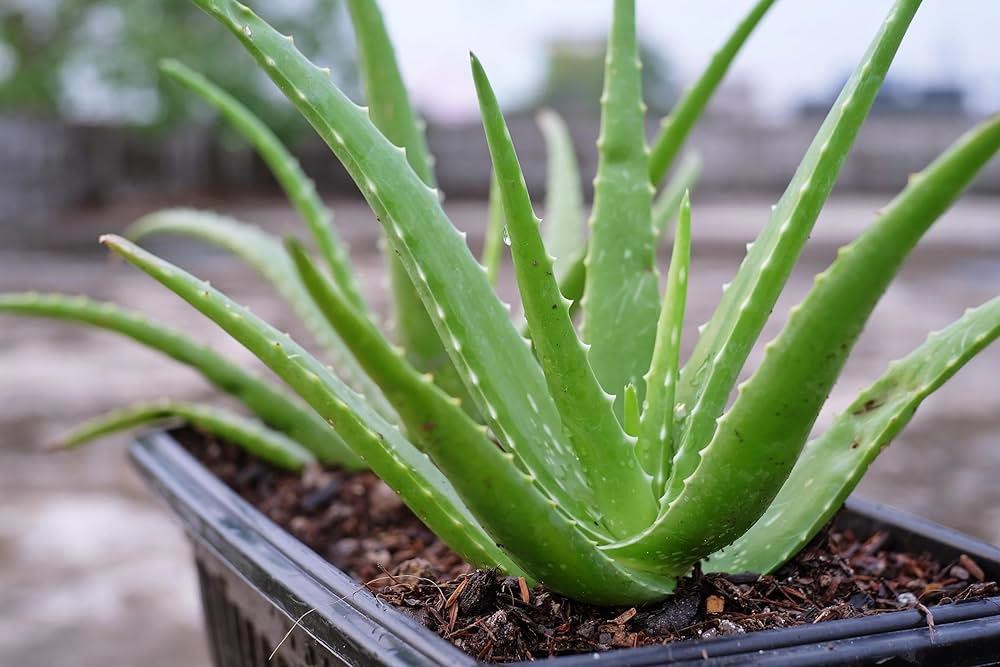
Biological source : dried juice of the leaves of various species of the genus Aloe
Family: liliaceae
Chemical constituents : Anthraquinones and chromones
Use: Used in herbal shampoo, also reduce inflammation, which can help People with dandruff symptoms, such as itchiness. It is an antifungal And antibacterial properties of Aloe vera may prevent Dandruff, restore The pH of scalp and increases the growth of the hair. Aloe vera cleaned The hair shaft efficiently, striping of extra sebum and residues from hair.
Preparation of Plant Extract : All the herbs were accurately weighed by using digital Balance. The crude herbs were collected and these ingredients Were size reduced using hand driven mixer individually Grinded into powder, fine powder was passed through sieve Number. 120 and separately mixed with 100 ml distilled water And kept for boiling till water gets reduced to one quarter. After boiling, the extract was cooled at normal room Temperature and then filtered with muslin cloth to get the final Filtrate [8, 9]
III. PREPARATION PROCEDURE OF HERBAL SHAMPOO POWDER10-14
Following steps are followed in sequential manner for formulation of herbal shampoo powder.
- Drying : All the ingredients are in dried under shade and then grinded
- Weighing :- All the required herbal powders for shampoo preparation were weighed individually.
- Size reduction :- The crude ingredients were collected and these ingredients were size reduced using hand driven mixer individually.
- Mixing :- All these fine ingredients were mixed thoroughly by stainless steel spatula to form a homogenous fine powder.
- Sieving :- Then this fine powder was passed through sieve no : 125 , to get the sufficient quantity of fine powder.
- Packing and labeling :-Then it was packed and labelled suitably.
IV. METHOD
- Take a bowl and add Shikakai, Reetha, Amla, Fenugreek and Hibiscus powder.
- Mix them well to get in equal composition.
- Later add Black sesame seeds powder and add neem powder
- Mix all the components for 15-20 mins with Aloe Vera gel
- Heat the total mixture on a Hot plate.
- Add Sodium carboxyl methyl cellulose and Preservative.
- Cool the mixture and finally add Rose water.
A. Formulation of Shampoo
Tabble.no.1
|
Sr.no. |
Ingredients |
Quantity |
Purpose |
|
1. |
Amla |
5%W/V |
Strengthen the scalp and hair |
|
2. |
Neem |
5%W/V |
Antibacterial |
|
3. |
Shikakai |
5% W/V |
Foaming agent |
|
4. |
Reetha |
5% W/V |
Foaming agent |
|
5. |
Aloe vera |
5% W/V |
Conditiong agent |
|
6. |
Black Seed |
5% W/V |
Improve hair growth, Blacken the white hair |
|
7. |
Sodium carboxyl |
2%W/V |
Thickening agent |
|
8. |
Hibiscus |
5%W/V |
Perfuming agent |
|
9. |
Rose water |
1ml |
Perfume |
|
10. |
Distilled water |
Q.S |
Vehicle |
B. Evaluation Parameters of Herbal Shampoo : [ 16-27]
- Physical appearance: The attractiveness of shampoos For consumers tends to be judged visually to observe Clarity, colour, odour it shows physical appearance of the Formulation.
- pH: The pH levels of the shampoo tested in 1% and 10% Solutions were evaluated using a pH meter at a room Temperature of 25±2 °C.
- Foaming ability and foaming stability: The most used technique for assessing foaming ability is the cylinder shake method. A 250 ml graduated cylinder was filled with 50 ml of the shampoo solution at room temperature, covered by hand, and shaken ten times. Following 60 seconds of shaking, the total amount of the foam content was noted. The height of the foam that was produced was measured right away. The same process was used to measure the foam volume after 20 minutes in order to assess foam stability.
- Skin Irritation Test: Prepared polyherbal anti-dandruff Shampoo was applied on skin for 5 minutes after washed And test for irritation or inflammation on the skin.
- Washability : Wash your hands after applying of Shampoo to hand.
- Wetting Time: A substance’s wetting time depends on its concentration. Although Drave’s test is the official one, the canvas disc method is typically employed because it is simple and time-efficient. A smooth-surfaced disc of canvas paper is placed on top of the herbal shampoo solution. The stopwatch began. The wetting time was defined as the amount of time needed for the disc to start sinking.
- Antimicrobial Activity: This procedure involves melting the agar, cooling it to 45 degrees Celsius, inoculating it with the test microorganism, and then pouring it into a sterile petri plate. This procedure involves using a sterile cork borer to create holes in the medium that are about 9 mm in diameter after the agar plate has set. The antimicrobial agent is then placed in one hole, and a commercial formulation is inserted in another. As usual, the zone of inhibition’s diameter was measured two to three days after inoculation at 30-350C. The relative activity of several antimicrobial substances against the tested bacterium is indicated by the diameter of the zone of inhibition.
- Stability studies: The stability studies for the herbal Formulations were performed according to ICH Guidelines. The formulations were tested for their Physical appearance, % solid content, transparency, and PH.
- Eye irritation test: - The animals (albino rats) came from the animal shelter. Six albino rats had their eyes held wide with clips at the lid while a 1% shampoo solution was dripped into them. Over an average of four seconds, the rabbit's eye gradually deteriorated at predetermined intervals. Eyelid swelling, iris inflammation, ulceration, hemorrhage (bleeding), and blindness are all possible reactions to irritants.
- Nature of Hair after Wash: Nature of hair after wash was done by applying a small quantity of the powder on hair and then washed.
Conclusion
The goal of the current study was to create a herbal shampoo that would increase hair development and lessen hair loss while combing, while also being safer than chemical conditioning agents. The aqueous extract of medicinal plants, which are frequently used for hair washing in ancient practices, was used to produce herbal shampoo. Protein or hair loss is decreased by the use of synthetic conditioning treatments. Shikakai, amla, and other plant extracts are used in this study in place of synthetic cationic conditioners to produce the desired conditioning results. The primary goal of this study was to create a shampoo that is both stable and functionally useful by removing all synthetic ingredients that are typically included to these kinds of formulations. Numerous tests were conducted to assess the manufactured shampoo’s product performance. The produced shampoo’s assessment study yielded a similar result for the quality control test; nonetheless, additional scientific validation is required for its overall quality.
References
[1] Srinivas M, Kamalika S, Sharma JVC. The Review of Scalp Hair Health, Hair Growth, and Hair Care Products. Int J Trichology. 2021;8(12):541. [2] Yamamoto K, Sadahito K, Yoshikawa M, et al. Hyena Disease (premature physeal closure) in calves due to Overdose of vitamins A, D3, E. Vet Hum Toxicol. 2003;45(2):85-87. [3] Ramadan R, Tawdy A, Abdel Hay R, Rashed L, Tawfik D. The antioxidant role of paraoxonase 1 and vitamin E In three autoimmune diseases. Skin Pharmacol Physiol. 2013;26(1):2-7. [4] Vitamins and minerals: B vitamins and folic acid NHS Choices. Washington, DC: National Health Service; 2017. [5] Valdes F. Vitamin C. Actas Dermosifiliogr. 2006;97(9):557-559. [6] Balkrishna A. Acacia Miller Fabaceae (Acacia concinna Willd. DC). World Herbal Encyclopedia (Angiosperms Part-1). 2017; 349-354. [7] Khanpara K, Renuka V, Harisha CR. A detailed investigation On shikakai (Acacia concinna Linn.) fruit. Journal of Current Pharmaceutical Research. 2012;9(10):06- 10. [8] Dandekar VR, Garhwani YD, More A, Pote P, Kore P. Formulation and evaluation of polyherbal anti-dandruff Shampoo. Int J Ayurvedic Med. 2022;13(22):365-369. [9] Bassett IB, Pannowitz DL, Barnetson RS. A comparative Study of tea-tree oil versus benzoylperoxide in the Treatment of acne. Med J Aust. 1990;153(21):8. [10] Bhagwat SS. Formulation and evaluation of herbal Shampoo. Int J Creative Res. 2020;8(9):2860-2869. [11] Bhari D, Quazi A, Joshi A. Formulation and evaluation Of anti-dandruff shampoo. Int J Eng Sci Comput. 2020;10(3):25116-25122. [12] Pal R, Saraswat N, Wal P, Pal Y. Preparation and Assessment of polyherbal anti- dandruff formulation. Open Dermatol J. 2020;14:22-27. [13] Sravanthi K, Kavitha N, Soumy K. A review on Formulation and evaluation of herbal anti-dandruff Shampoo. Int J Pharm Res Appl. 2012;6(3):1300-1311. [14] Bahmani MM, Evid J. A review paper on ethanobotanical And therapeutic of fenugreek. J Evid Based Integr Med. 2016;1(1):53-69. [15] Gadge SS, Wankhade SP, Tapare S, Kalaskar SM, Holey SD. Journal of Pharmacognosy and Phytochemistry. 2023;12(4):35-41. [16] Chavan VM, Suryavanshi KJ, Bhor AS. Formulation and Evaluation of Herbal Shampoo. 2019;9(5):88-96. [17] Jadhav SS, Jadhav KS, Dalvi YV. Formulation and Evaluation of herbal liquid shampoo. Res J Top Cosmet Sci. 2018;9(2):44-48. [18] Kumar A, Mali RR. Evaluation of prepared shampoo Formulations and to compare formulated shampoo with Marketed shampoos. Evaluation. 2010;3(1):0-25. [19] Saraf S, Hargude SM, Kaur CD, Saraf S. Formulation And evaluation of herbal shampoo containing extract of Allium sativum. Res J Top Cosmet Sci. 2011;2(1):18. [20] Priya DG, Kamini VM, Madhavee DB. Formulation and Evaluation of herbal shampoo. 2018;9(3):29-31. [21] Nikam NR, Patil PR, Jadhav RP, Vakhariya RR, Magdum CS. Formulation and evaluation of herbal Shampoo: A comparative study. Evaluation. 2019;1:6-25. [22] Vijayalakshmi A, Sangeetha S, Ranjith N. Formulation And evaluation of herbal shampoo. Asian J Pharm Clin Res. 2018;11(4):121-124. [23] Bala R, Madaan R, Arora S. Green Synthesis and Characterization of silver nanoparticles using Kinnow Mandarin peels extract and its application in Shampoo Formulation. Res J Pharm Technol. 2017;10(8):2461-2466. [24] Preethi PJ, Padmini K, Srikanth J, Lohita M, Swetha KP, Rao PV. A review on herbal shampoo and its evaluation. Asian J Pharm Anal. 2013;3(4):153-156. [25] Sastrawidana DK, Pradnyana GA, Madiarsa M. Preparation and characterization of herbal shampoo from Goat milk and natural extract. In: Journal of Physics: Conference Series. 2019 Oct 1;1317(1):012033 [26] Preethi PJ, Padmini K, Srikanth J, Lohita M, Swetha KP, Rao PV. A review on herbal shampoo and its evaluation. Asian J Pharm Ana. 2013;3(4):153-156. [27] Gadge SS, Wakandhe SP, Tapre S, Holey SD. Formulation and evaluation of polyherbal anti-dandruff Shampoo. 2023;1(12):35-41.
Copyright
Copyright © 2025 Siddhesh Jatar , Akash Shelke. This is an open access article distributed under the Creative Commons Attribution License, which permits unrestricted use, distribution, and reproduction in any medium, provided the original work is properly cited.

Download Paper
Paper Id : IJRASET66699
Publish Date : 2025-01-27
ISSN : 2321-9653
Publisher Name : IJRASET
DOI Link : Click Here
 Submit Paper Online
Submit Paper Online

